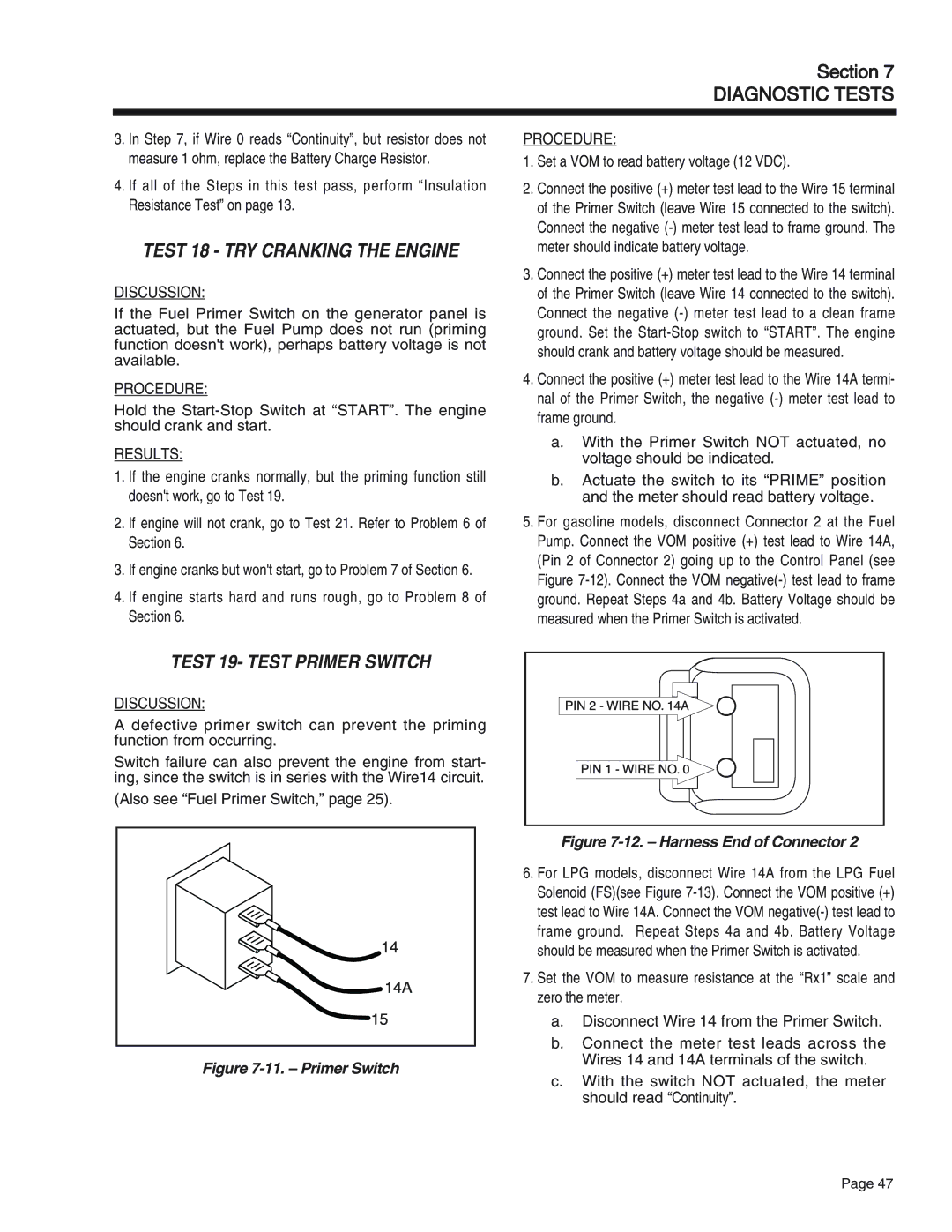65, 75, 55 specifications
Generac Power Systems has established itself as a leader in power generation, offering a range of high-performance generators suited for residential and commercial applications. Among its lineup, the Generac 55, 65, and 75 kW generators stand out for their reliability, efficiency, and advanced features.The Generac 55 kW generator is designed to provide a powerful backup solution for medium to large homes or small businesses. It features a robust engine that delivers dependable performance while maintaining fuel efficiency. One of its key characteristics is the True Power Technology, which produces clean and stable power, ensuring that sensitive electronic devices run smoothly without risk of damage. This generator is equipped with a fully automatic transfer switch, allowing for seamless power transition during outages, with minimal disruption.
Moving to the 65 kW model, it offers increased capacity while retaining the fundamental qualities of the 55 kW version. This unit is particularly suited for larger homes or commercial applications that require greater power demands. The 65 kW generator utilizes Generac’s G-Force engine, known for its durability and reduced maintenance needs. Advanced features such as remote monitoring capabilities allow users to check the generator's status from anywhere, providing peace of mind and convenience.
The 75 kW generator takes performance to the next level, making it ideal for even more significant power needs. It is engineered for both quiet operation and enhanced performance, accommodating a wide range of requirements from residential to larger commercial operations. The 75 kW model includes a full-load voltage regulation system that maintains stable power output under varying loads, safeguarding appliances and equipment.
All three models incorporate advanced air-cooled technology, which enhances their efficiency and operational lifespan. Additionally, their corrosion-resistant enclosures ensure durability even in harsh weather conditions, making them suitable for diverse environments. The intuitive LCD display on each unit provides critical information, including runtime hours and maintenance reminders, empowering users with easy access to the generator's performance data.
Overall, Generac Power Systems' 55, 65, and 75 kW generators represent a commitment to quality, reliability, and innovation in backup power solutions. They are designed to meet the demands of modern power consumption while ensuring peace of mind through robust engineering and advanced technology. Whether for home use or commercial applications, these generators provide an effective means to stay prepared for unexpected power outages.

